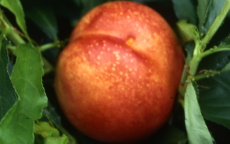Nectarine trees
Nectarines are smooth-skinned peaches, and nectarine trees are grown in the same way although their requirements are slightly more demanding.
Garden Beauty
Garden Beauty is a slow-growing dwarf nectarine variety, ideal for pot culture.- Picking season: Mid
- Self-fertility: Self-fertile
- Flesh colour: Golden / Yellow
Lord Napier
Lord Napier is the best white-fleshed nectarine for the UK climate.£43.75buy- Awards: RHS AGM (former)
Mesembrine®
Mesembrine is a sweet-flavoured flat nectarine with yellow flesh.£43.75buy- Picking season: Mid
- Self-fertility: Self-fertile
- Flesh colour: Golden / Yellow
Pineapple
Despite the name, Pineapple is actually a yellow-fleshed nectarine, ripening in early September.- Picking season: Early
- Self-fertility: Self-fertile
- Flesh colour: Golden / Yellow
How to choose Nectarine trees
Nectarines are essentially smooth-skinned peaches. They can be grown successfully in the southern parts of the UK, but for best results they should be planted in a shelted location in full sun.
Most nectarines are self-fertile, but cross-polinate readily with other nectarines and also peaches.
All nectarines are susceptible to peach-leaf curl, a fungal infection which causes the leaves to curl up in early spring. Although not harmful to the tree in the longer term, a severe infection will prevent the tree cropping. The problem is easily avoided by covering the tree with horticultural fleece in winter and early spring - since the infection is spread in rain drops.
As with peaches, be careful not to over-water nectarines.

